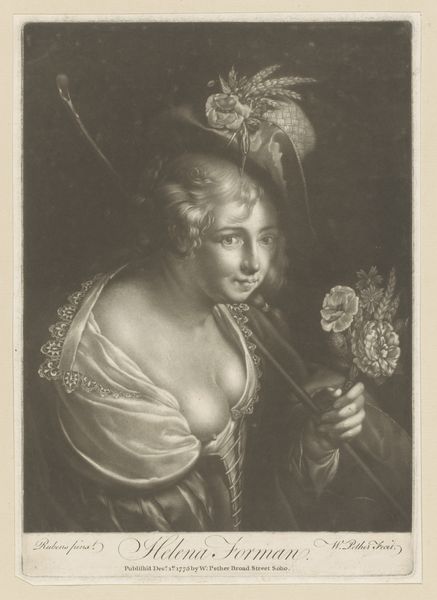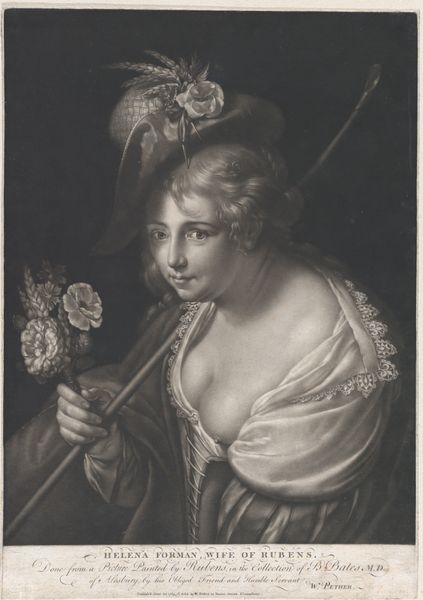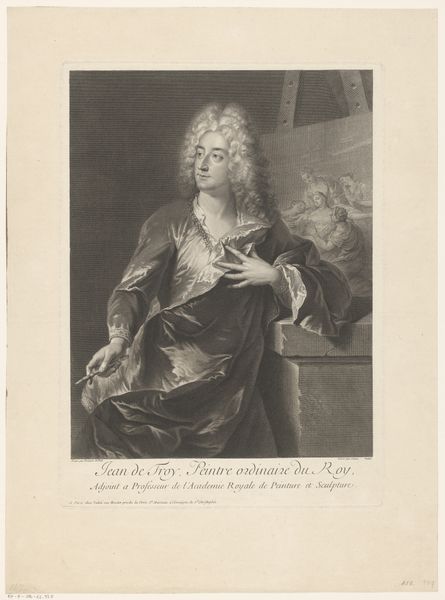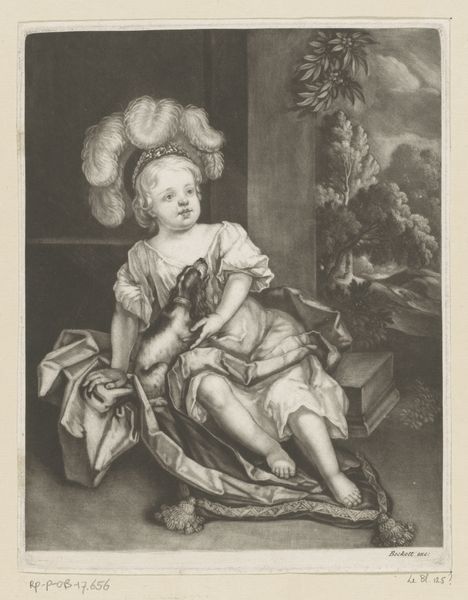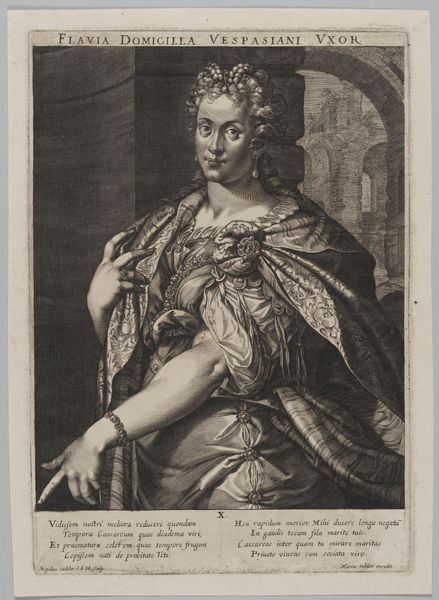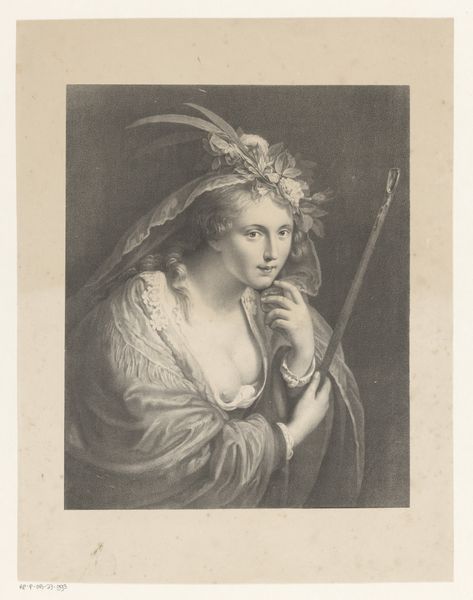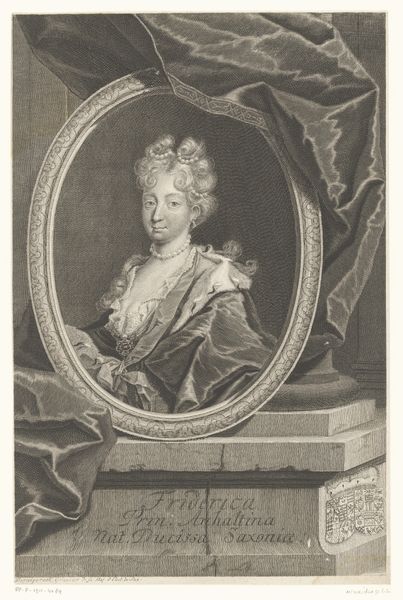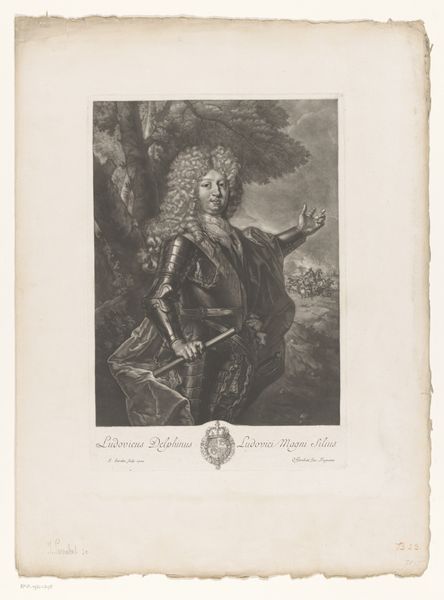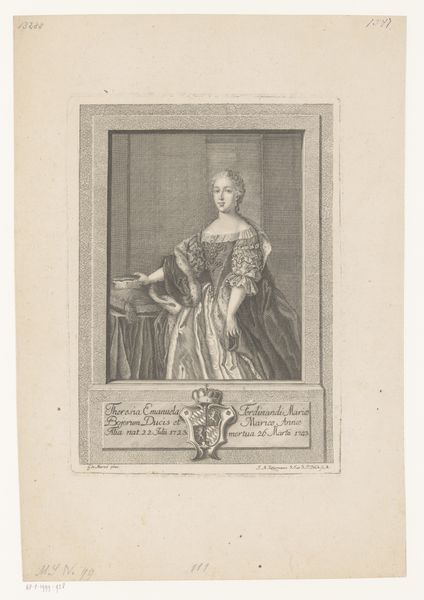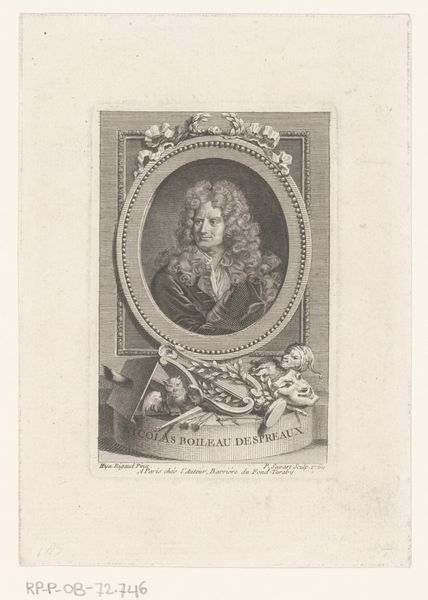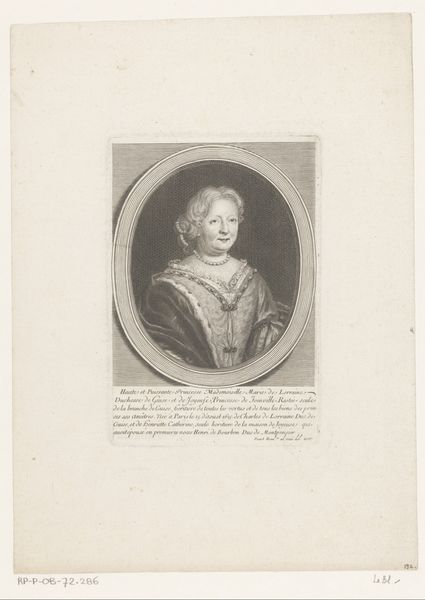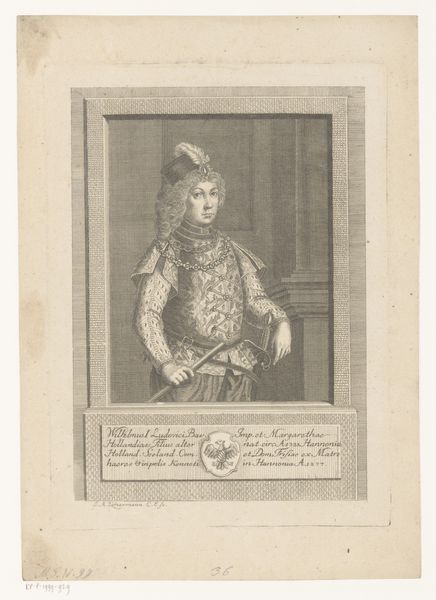
engraving
#
portrait
#
figuration
#
line
#
history-painting
#
nude
#
engraving
#
rococo
Dimensions: height 506 mm, width 357 mm
Copyright: Rijks Museum: Open Domain
Curator: Here we have William Pether's "Portret van een vrouw in pastorale klederdracht", an engraving from 1769. It depicts a woman dressed as a shepherdess. What are your first thoughts? Editor: Well, it feels quite theatrical, doesn't it? It has a kind of rustic charm with this costuming, yet, there’s something very posed and deliberate about it. The shepherdess garb contrasts with the overall sense of formality. What do you make of that tension? Curator: That contrast is crucial. We must consider the social and cultural context. During the 18th century, there was a fascination among the aristocracy with the pastoral life, an idealization of rural simplicity, completely disconnected with how difficult it actually was. Engravings like these become mass produced fantasies for the upper class to enjoy and consume. It’s a carefully constructed performance of pastoral fantasy. Why do you think someone would want a portrait like this mass-produced? Editor: So, it’s less about authenticity and more about participating in a trend, a shared social fantasy perhaps? Displaying it was a way to signal participation in a specific social milieu. Curator: Exactly! Think about the role of prints at the time. They democratized art, to a degree, but also perpetuated specific visual languages. It was about owning an image, associating oneself with a specific sensibility—a controlled image of what an affluent class was supposed to look like. What does it tell us when even ‘being natural’ is turned into artifice? Editor: I never considered the distribution element this deeply. It's amazing how much of our current understanding is influenced by those old prints. Curator: Absolutely, and it’s worth noting how images can be instrumental in shaping perceptions and values and social stratification over time. They shape what the public comes to see as desirable. Editor: So I have to remember it’s not enough to describe the content of a piece: understanding how, where, and why the image existed is key. Curator: Precisely, the museum then must become a tool that illuminates and interrogates those complicated historical dynamics.
Comments
No comments
Be the first to comment and join the conversation on the ultimate creative platform.
